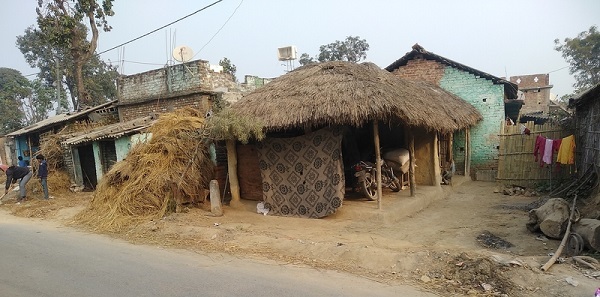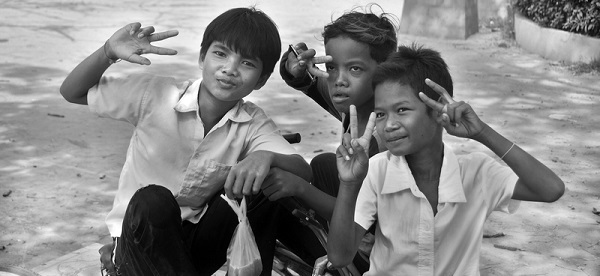
 Data Structure
Data Structure Networking
Networking RDBMS
RDBMS Operating System
Operating System Java
Java MS Excel
MS Excel iOS
iOS HTML
HTML CSS
CSS Android
Android Python
Python C Programming
C Programming C++
C++ C#
C# MongoDB
MongoDB MySQL
MySQL Javascript
Javascript PHP
PHP
- Selected Reading
- UPSC IAS Exams Notes
- Developer's Best Practices
- Questions and Answers
- Effective Resume Writing
- HR Interview Questions
- Computer Glossary
- Who is Who
What is the full form of BPL ?
What is BPL?
BPL stands for "Below Poverty Line". In many countries, including India, the government has set a poverty line below which people are considered to be living in poverty. BPL is the term used to refer to people who fall below this poverty line and are eligible for government assistance programs. This assistance can include things like food subsidies, housing assistance, and financial aid for education and health care. In India BPL cardholder's are eligible for various government schemes and also for the subsidies on various services like gas, electricity etc.

History of BPL
The history of the Below Poverty Line (BPL) program dates back to the 1970s, when the Indian government first began to implement poverty alleviation programs in response to the growing poverty in the country. The BPL program was officially launched in the 1980s as part of the government's efforts to identify and provide assistance to families living below the poverty line.
In the beginning, the government used a variety of methods to identify people living below the poverty line (BPL), such as the "headcount ratio" method, which looked at the number of people living below the poverty line as a percentage of the total population. However, this method was criticized for not being accurate enough and for not taking into account the varying levels of poverty within a given area.
In order to address these issues, in the 1990s, the government introduced the "poverty ratio" method, which looked at the proportion of people living below the poverty line in a given area, rather than just the total number. This method was considered to be more accurate and was used to identify families eligible for the BPL program.
In 2002, the government introduced a new methodology called the Tendulkar committee methodology, which was based on the Multidimensional Poverty Index (MPI) which takes into account various factors such as education, health, and living standards. This methodology is currently being used to identify families eligible for the BPL program.

Despite these efforts, the BPL program has faced numerous challenges, such as lack of accurate data, lack of proper implementation, and lack of funds. But the government has been trying to improve the system by using advanced technologies like Aadhaar based identification and digitizing the BPL list.
Criteria of BPL
The criteria for determining eligibility for the Below Poverty Line (BPL) program can vary depending on the country and the specific program. In India, the Tendulkar committee methodology, which is currently being used to identify families eligible for the BPL program, takes into account several factors such as
The household's income and expenditure
Access to basic amenities such as safe drinking water, sanitation, and housing
Education and health status of household members
Occupation of the household and the nature of their work
Assets such as land and cattle
Way forward
There are several ways that the Below Poverty Line (BPL) program can be improved to better serve those in need. Some of these include
Improving the targeting methodology of the program ? One of the main challenges of the BPL program is that it often fails to reach the people who are in most need.
Increasing transparency and accountability ? Another challenge of the BPL program is that it is often criticized for lack of transparency and accountability.
Providing more comprehensive assistance ? The current BPL program focuses mainly on providing food subsidies, but it is important to recognize that poverty is a multidimensional problem that requires a multidimensional solution.
Involvement of community-based organizations ? Community-based organizations are well-equipped to identify the needs of their communities and can help the government to identify the households that are in need of assistance.
Encouraging private sector participation ? Private sector participation can help to reduce poverty by creating employment opportunities and increasing the income of the poor.
Conclusion
In conclusion, the Below Poverty Line (BPL) program is an important initiative intended to provide assistance to people living in poverty. However, it faces numerous challenges such as lack of accurate data, lack of proper implementation, and lack of funds. Despite these challenges, the government has continued to make efforts to improve the BPL program and to reduce poverty in the country.
FAQs
Q1. What is the BPL program?
Ans. The BPL program is a government initiative intended to provide assistance to people living in poverty. The program typically provides subsidies for food, housing, education and healthcare.
Q2. Who is eligible for the BPL program?
Ans. Eligibility for the BPL program is determined based on a combination of factors such as income, occupation, education, and living conditions. The exact criteria for determining eligibility can vary depending on the country and the specific program.
Q3. How is the BPL program implemented?
Ans. The BPL program is typically implemented by government agencies and officials. The government uses various methods to identify people living below the poverty line and provides them with assistance through subsidies, cash transfers and other forms of support.

